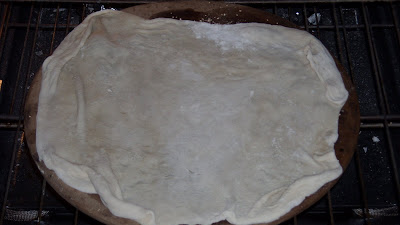
The Chardonnay grape is arguably the widest planted vinifera grape varietal in the world. This grape is grown world-wide and the wines produced from it can often be called: "winemakers wine" due to its ability to reflect what the winemaker does in the cellar.
The physical and spiritual home of Chardonnay though is the Burgundy region of France. The true origin of this grape is somewhat suspect, but it appears that it dates back to Roman times and that the grape is a cross between Pinot Noir and Gouais Blanc. Whatever the origin, this grape is being grown around the world. Chardonnay has the reputation of being hardy, adaptable and it grows with relative ease in a wide variety of climates. The "new world" style Chardonnay wines have a very ripe, almost tropical fruit component. Australia and California wines often show this trait. They also tend to have a buttery, oaky (vanilla) edge. The "buttery" component is due to malolactic fermentation which converts malic acid into the softer tasting lactic acid. The use of new oak barrels contributes a vanilla component to the wine, but it can also add hints of baking spices or even a toasted bread quality.
This past Saturday I had a chance to sample 11 Chardonnay wines from Burgundy. The wines were good examples of terrior driven wines. The winemakers used a minimal intervention approach (i.e. , the wine is made in the vineyard). Below is the line-up and my tasting notes.
While the above description and the attached tasting notes may seem a bit pretentious, the reality of these tasting are they are much less formal than it would appear and there is substantially much more "drinking" vs. "tasting" going on. As one of my friends says: "Wine, it's not brain surgery"
The "starter" wines of the afternoon were two Chablis wines.
Simonnet Febvre Chablis Millesime-2004: Mineral nose, tart citrus fruit with a nice minerality on the palate.
Simonnet Febvre Chablis Millesime-2005: Toasty nose, softer citrus fruit. I much preferred the 2004 vintage.
The first flight were three Bourgogne's. These wines are basic "table wines" by their designation, though they cost around $30.00/bottle.
Etienne Sauzet-Bourgogne 2005: Mineral nose, citrus fruit and honey on the palate. Nice clean finish.
Henri Boillot 2005: Smoke and oak on the nose, crisp fruit, dry finish.
D. Denis Mortet 2005: Mineral nose, minerally palate with crisp lemon/citrus fruit.
The second flight were three wines from Meursault. The Wikipedia entry says about Meursault:
Meursault is an Appellation d'origine contrôlée (AOC) situated in the Côte de Beaune subregion of the Burgundy wine region. It lies along the foot of the Cote-d'Or escarpment, around Beaune and with the broad Saône valley plain to its east. Meursault produces mainly white wines from Chardonnay grapes, primarily in a style with a clear oak influence, which have led to descriptions such as "buttery" to be applied to powerful examples of Meursault wines. Within the Meursault AOC there are some Premier Cru vineyards, but no Grand Cru. This has however not stopped the wines from Meursault from competing with the white burgundies from the villages Chassagne-Montrachet and Puligny-Montrachet, where several Grands Crus are situated.
The three wines in this flight were:
Guy Bocard - Meursault-Charmes 2004: Citrus on the nose with a hint of toast.
Guy Bocard - Meursault/ Le Narvaux 2004: Herbaceous nose, creamy mid-palate and a soft finish.
Guy Bocard - Meursault-Vielle Vignes (old vine) 2004: Complex honey/perfume nose, bright, crisp fruit with a creamy finish.
The last flight of the night was two wines from Puligny-Montrachet. The wines from Puligny-Montrachet have a complex minerality. The two wines in the flight were:
Louis Carillon - Puligny-Montrachet 2005: Savory nose and palate, bright lemony fruit, long finish.
Louis Latour - Puligny-Montrachet-"Sous Le Puits" 1st Cru 2005: A lively, with pleasant freshness, slight woody notes on the nose, more mineral. Citrus aromas of lemon, are first noticed, leading into more vegetable ones, fresh cut grass and menthol.
The last wine I tasted (since I was sitting next to Sam Sundeleaf who brought this wine to share after the "real" tasting) was:
 Sam Sundeleaf
Sam SundeleafMichel Colin-Deleger & Fils - Saint-Aubin- 1st Cru "Les Combes" 2003: Big, powerful, toasty new-oak nose. Lots of nuttiness . The palate is very cool and classy. There is lovely clear orchard fruit and a definite mineral acidity. Juicy fruit, and really quite long and fine finish.
All of these wines were nice and these are definitely "big boy" Chardonnay wines with the prices to go with them. The wines in the 2nd and 3rd flight would retail between $40-70/btl. These are wines that you want to share with people who would appreciate them. If you are roasting a pig in the backyard, stick with something a more affordable. Nothing is wrong with macro-brew or even a Two Buck Chuck. While I keep hearing the story about how the Two Buck Chuck Chardonnay won a gold medal at the California State Fair, all of these above wines would beat it like a rented mule in a head to head competition.
 Jay Fewel & Guest-Photo-Courtesy of John Montague
Jay Fewel & Guest-Photo-Courtesy of John Montague





















